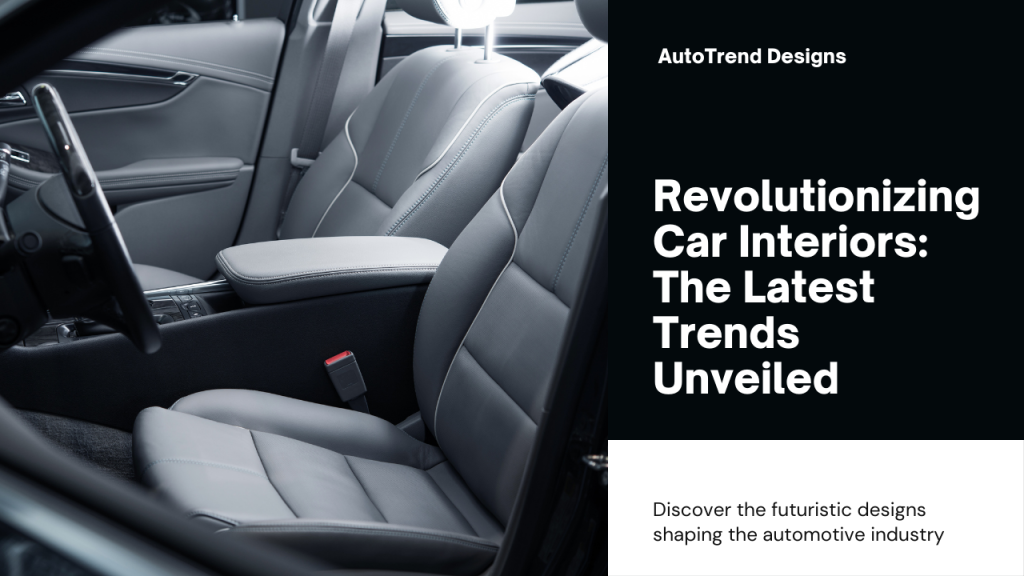
Car interiors play a crucial role in enhancing comfort, convenience, and overall driving experience. This article will examine the latest trends in car interior design, focusing on innovative features and technologies that redefine the cabin environment for drivers and passengers.
Premium Materials and Craftsmanship
Automakers are elevating car interiors with premium materials and meticulous craftsmanship to create luxurious and inviting cabin environments. High-quality leather upholstery, genuine wood accents, and metal trim details reflect attention to detail and craftsmanship that enhance the overall aesthetic appeal and comfort of the interior. Brands like Mercedes-Benz, BMW, and Audi set benchmarks for luxury and sophistication in automotive interior design, offering customers personalized customization options to tailor their driving experience.
Digital Cockpits and Infotainment Systems
Digital cockpits and advanced infotainment systems are transforming car interiors into sophisticated command centers. Large touchscreen displays, configurable digital instrument clusters, and voice-activated controls provide drivers with intuitive access to vehicle settings, navigation, entertainment, and connectivity features. Integrated smartphone integration, wireless charging pads, and seamless connectivity with smart devices enhance convenience and productivity on the road, catering to tech-savvy consumers who prioritize connectivity and digital integration in their vehicles.
Comfort and Ergonomics
Comfort is paramount in car interior design, with automakers focusing on ergonomic seating, adjustable lumbar support, and climate control systems that optimize passenger comfort during long journeys. Multi-zone climate control, heated and ventilated seats, and ambient lighting options create a personalized and comfortable environment for drivers and passengers alike. Automakers conduct extensive research and development to design interiors that reduce noise, vibration, and harshness (NVH) levels, ensuring a quiet and relaxing driving experience for occupants.
Sustainability and Eco-Friendly Materials
Increasingly, automakers are embracing sustainability in car interior design by incorporating eco-friendly materials and manufacturing processes. Recycled plastics, natural fibers, and bio-based materials are used to reduce environmental impact and promote sustainability throughout the vehicle’s lifecycle. Brands like Volvo and Tesla prioritize sustainability initiatives in their interior designs, offering customers environmentally conscious options without compromising on quality, durability, or aesthetic appeal.
Personalization and Customization Options
Car interior design allows for extensive personalization and customization options that enable customers to create a unique and tailored driving experience. Customizable seating configurations, interior color schemes, lighting accents, and trim finishes empower customers to reflect their individual style and preferences. Automakers offer premium packages and special editions that feature exclusive materials, bespoke finishes, and enhanced comfort features to cater to discerning consumers who seek a personalized driving environment.
Car interior design continues to evolve with innovative features, advanced technologies, and sustainable practices that enhance comfort, convenience, and personalization for drivers and passengers. As automakers push the boundaries of innovation in interior design, the future promises to deliver even more immersive and connected driving experiences that redefine expectations and set new standards for automotive luxury and functionality.

